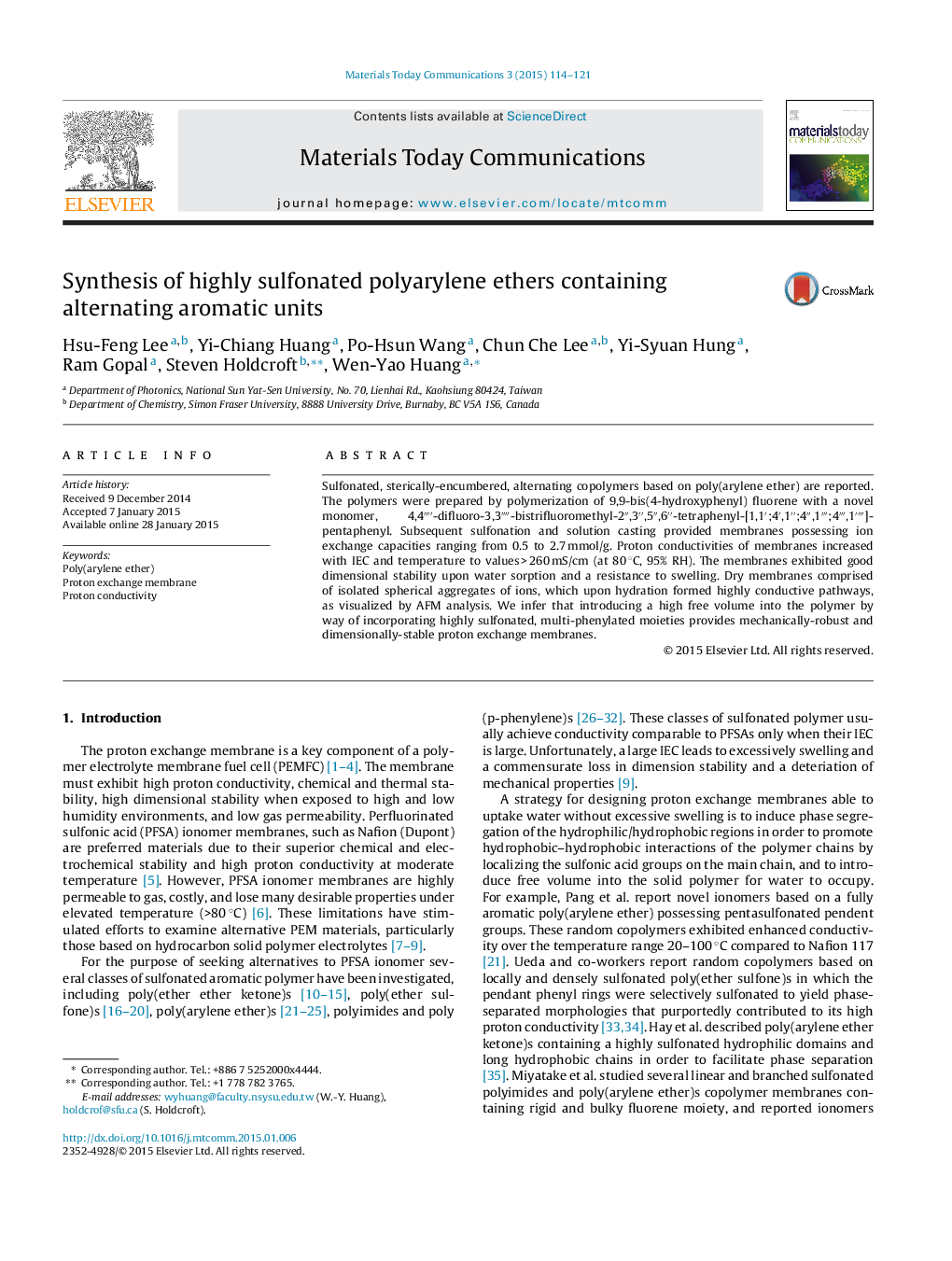| Article ID | Journal | Published Year | Pages | File Type |
|---|---|---|---|---|
| 1586207 | Materials Today Communications | 2015 | 8 Pages |
Sulfonated, sterically-encumbered, alternating copolymers based on poly(arylene ether) are reported. The polymers were prepared by polymerization of 9,9-bis(4-hydroxyphenyl) fluorene with a novel monomer, 4,4⁗-difluoro-3,3⁗-bistrifluoromethyl-2″,3″,5″,6″-tetraphenyl-[1,1′;4′,1″;4″,1‴;4‴,1⁗]-pentaphenyl. Subsequent sulfonation and solution casting provided membranes possessing ion exchange capacities ranging from 0.5 to 2.7 mmol/g. Proton conductivities of membranes increased with IEC and temperature to values > 260 mS/cm (at 80 °C, 95% RH). The membranes exhibited good dimensional stability upon water sorption and a resistance to swelling. Dry membranes comprised of isolated spherical aggregates of ions, which upon hydration formed highly conductive pathways, as visualized by AFM analysis. We infer that introducing a high free volume into the polymer by way of incorporating highly sulfonated, multi-phenylated moieties provides mechanically-robust and dimensionally-stable proton exchange membranes.
Graphical abstractSulfonated multi-phenylated alternating copolymers were synthesized. The strategy of using highly-encumbered polymer frameworks for the design of mechanically-robust and dimensionally-stable proton conducting membranes is demonstrated. Proton conductivities ranged between 0.08 and 0.26 S/cm at 80 °C/95% RH. TEM analysis of the polymers, in the dehydrated state, revealed isolated spherical aggregates of ions, which coalesce upon hydration to provide highly conductive pathways.Figure optionsDownload full-size imageDownload as PowerPoint slide
